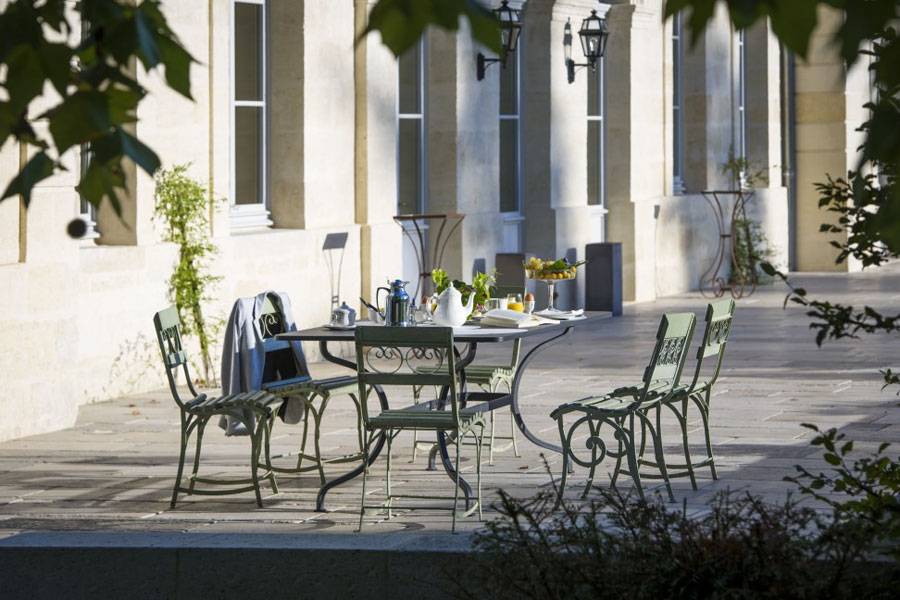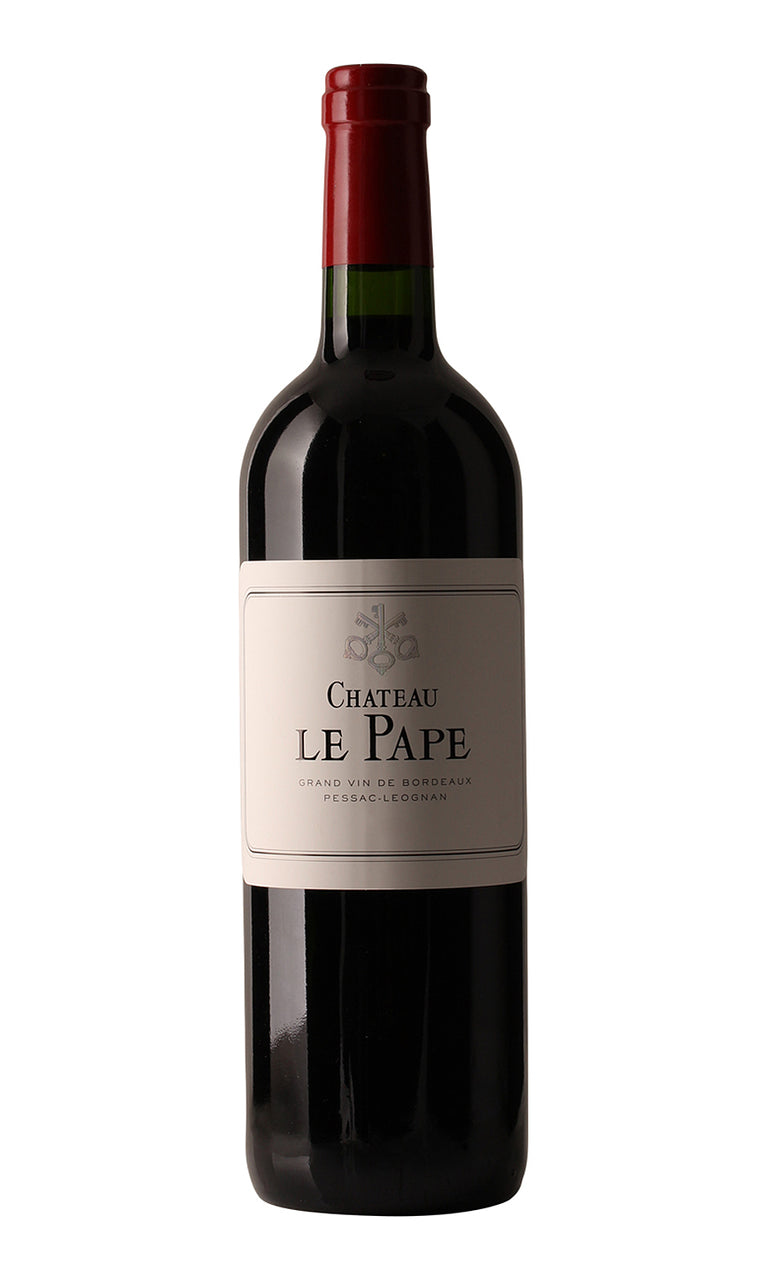- Colour Red
- Producer Château le Pape
- Region Pessac-Léognan
- Drinking 2021 - 2028
- Case size 6x75cl
- Available Now
2016 - Ch Le Pape Pessac Léognan - 6x75cl
- Colour Red
- Producer Château le Pape
- Region Pessac-Léognan
- Drinking 2021 - 2028
- Case size 6x75cl
- Available Now
Select pricing type
Need help? Call +44 (0)20 7793 7900 or email wine@goedhuiswaddesdon.com.
-
Goedhuis, April 2017, Score: 91-93
From the neighbouring estate to Ch Haut Bailly, and made by the same expert team, this 9 hectare property is dominated by 80% Merlot, supported by 20% Cabernet Sauvignon. It is fresh, crisp, and fruity, with crunchy little tannins. There is good balance on the medium weight palate, and it should make for an approachable early-drinking wine.
-
Neal Martin, January 2019, Score: 89
The 2016 Le Pape, matured in 33% new oak, has a classic blackberry, cedar and graphite bouquet that you might almost mistake for a Pauillac. The palate is medium-bodied with supple tannin. It feels rounded in the mouth and more approachable than many of its Pessac-Léognan peers. Touches of cedar and pain grillé appear toward the finish. Enjoy over the next six to eight years. 2020 - 2028
-
Neal Martin, April 2017, Score: 90-92
The 2016 Le Pape is a blend of 80% Merlot and 20% Cabernet Sauvignon picked from 3-4 September and on 14 October respectively. It is matured in 30% new oak, although my sample contained 50% (which was accounted for in my assessment). It offers plenty of raspberry coulis and crushed strawberry aromas on the nose, the new oak nicely integrated, quite generous and almost opulent in the context of the vintage. The palate is medium-bodied with grainy tannin, a splash of soy on the entry, a keen line of acidity. There is a touch of austerity towards the saline finish, but that will abate by the time it is bottled. This is a fine Château Le Pape from "l'equipe" Haut-Bailly. Drink Date 2020 - 2032
-
Antonio Galloni, January 2019, Score: 91
The 2016 Le Pape is a gorgeous wine to drink now and over the next decade or so. Ripe and luscious in the glass, with terrific depth and character, the 2016 offers tremendous near and medium-term appeal. Black cherry, plum, licorice, leather, spice and smoke add to an impression of darkness in this supple Pessac-Léognan. 2018 - 2028
-
Antonio Galloni, April 2017, Score: 89-92
The 2016 Le Pape is terrific. Bright, perfumed and nuanced in the glass, it captures all the qualities of the year in its precise aromatics, sculpted fruit and refreshing personality. Impeccably balanced, the 2016 should provide plenty of immediate pleasure pretty much upon release.
-
James Suckling, April 2017, Score: 92-93
Lots of walnut and berry character. Medium-to full-bodied, round and silky with a lovely chocolate undertone. Very polished and juicy. So fine and racy.
-
Decanter, April 2017, Score: 93
So elegant, right from the first nose. The fourth vintage under Haut-Bailly ownership (because they declassified the 2013), this has appealing rich caramel and coffee bean edges and is beautifully elegant. It has soft, elongated tannins, and concentrated violet and fern notes, that seem to float through the palate. This property is really starting to show exactly what it can achieve. 80% Merlot and 20% Cabernet Sauvignon.
-
Matthew Jukes, April 2017, Score: 17
Very smooth and balanced and with rather moreish chocolate and plum notes this is an alluring wine with superb, grainy tannins and a nice plump, fruit-driven air.
-
Jancis Robinson, April 2017, Score: 17
Dark crimson. Easy and sweet and yet some freshness. Luscious and very gorgeous and sweet. Very complete and winning. Blackberry compote. Drink 2022-2032
-
Tim Atkin, May 2017, Score: 91
Made by the same team as Haut-Bailly, this Merlot- dominated red is deliberately produced in quite a forward style, with understated oak, grassy plum and red berry fruit and filigree tannins. Very drinkable. 2020-26
Producer
Château le Pape

Region
Pessac-Léognan
Stretching from the rather unglamorous southern suburbs of Bordeaux, for 50 km along the left bank of the river Garonne, lies Graves. Named for its gravelly soil, a relic of Ice Age glaciers, this is the birthplace of claret, despatched from the Middle Ages onwards from the nearby quayside to England in vast quantities. It can feel as though Bordeaux is just about red wines, but some sensational white wines are produced in this area from a blend of sauvignon blanc, Semillon and, occasionally, muscadelle grapes, often fermented and aged in barrel. In particular, Domaine de Chevalier is renowned for its superbly complex whites, which continue to develop in bottle over decades. A premium appellation, Pessac-Leognan, was created in 1987 for the most prestigious terroirs within Graves. These are soils with exceptional drainage, made up of gravel terraces built up in layers over many millennia, and consequently thrive in mediocre vintages but are less likely to perform well in hotter years. These wines were appraised and graded in their own classification system in 1953 and updated in 1959, but, like the 1855 classification system, this should be regarded with caution and the wines must absolutely be assessed on their own current merits.




